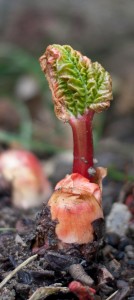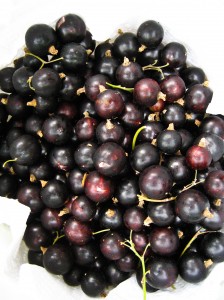 I struggle with motivation to go out and do anything in the garden in January – it seems to be dark almost continuously and (this year excepted) raining. However, as February arrives there is the merest hint of Spring – heralded by the slowly emerging snowdrops. These are bulbs I have unsuccessfully tried growing for years – the breakthrough came when we were given several clumps by my mother-in-law and most of these seem to have taken. However, just as these start to show their first white flower buds, a small group that I planted a long time ago in with a camellia that lives near the house is already in full flower (as shown in the photo).
I struggle with motivation to go out and do anything in the garden in January – it seems to be dark almost continuously and (this year excepted) raining. However, as February arrives there is the merest hint of Spring – heralded by the slowly emerging snowdrops. These are bulbs I have unsuccessfully tried growing for years – the breakthrough came when we were given several clumps by my mother-in-law and most of these seem to have taken. However, just as these start to show their first white flower buds, a small group that I planted a long time ago in with a camellia that lives near the house is already in full flower (as shown in the photo).
These encourage me to go into the garden, have a general tidy up and see what is about. I am pleased to say that the garlic that I planted in the front and the back garden is starting to grow, although it is easier to spot in the back garden raised bed than hidden amongst the tulip and allium bulbs that are starting to show in the front garden. (Maybe one day I will be organised enough to mark where they are when I plant them.) The hellebores are the main providers of spring growth at the moment, but, somewhat belatedly, I have taken away most of their leaves, as recommended by both Monty Don and Carol Klein. This has left the earth looking somewhat bare, but did uncover some anemone blanda that I planted some time ago as well as the first signs of growth of the aquilegia.
Elsewhere in the garden we have some winter scent from the sarcococca confusa that we have planted and colour from a winter jasmine and viburnum bodnatense dawn.
In the front garden we have trimmed down all of the grasses, moved some of the zebra grass and pruned the white bramble that we have as a centre piece. In doing so, we uncovered about a dozen hibernating ladybirds – if they survive for another month or so we should have no trouble with greenfly this year!
 The home produce has hit a bit of a hiatus, although the rhubarb is starting to come up and we have lots of shoots on the blackcurrant. I have all my seeds ready for planting in the next couple of months, although I will mainly be concentrating on beans, courgettes, chillis and salad leaves in the hope of getting some good yields throughout the year (although the aubergine is an experiment probably doomed to failure). If successful I will move on and add one or more new types of produce next year.
The home produce has hit a bit of a hiatus, although the rhubarb is starting to come up and we have lots of shoots on the blackcurrant. I have all my seeds ready for planting in the next couple of months, although I will mainly be concentrating on beans, courgettes, chillis and salad leaves in the hope of getting some good yields throughout the year (although the aubergine is an experiment probably doomed to failure). If successful I will move on and add one or more new types of produce next year.
I am trying seeds from the Real Seed Company this year. I am hopeful that as they are all seeds grown on their farm in Wales there may be a better chance that they will grow here in Northamptonshire. They also encourage seed saving and send instructions with the seeds.
It is also noticeable how many herbs have survived the Winter – I have lots of oregano, some sage, wild basil, rosemary, and burnet all looking healthy so far (and I have some hopes for the fennel that has been in for the last two years and is much beloved of hoverflies). The chives are also starting to show bright green shoots amongst the darker spots of the garden. Next year I will be adding borage (for bees) and sorrel (for soups) to the mix as well as more thymes and lavender (also for the bees).


